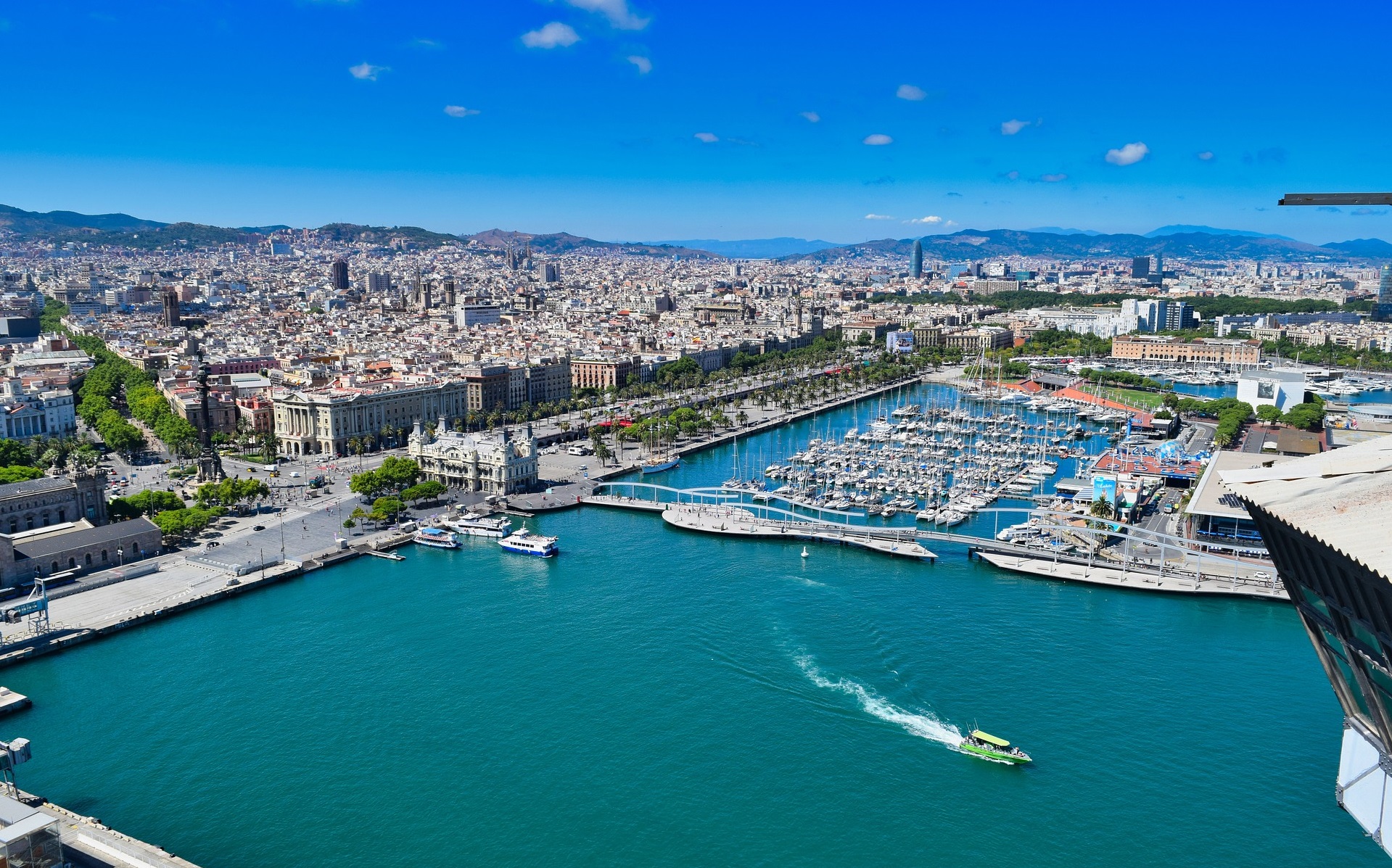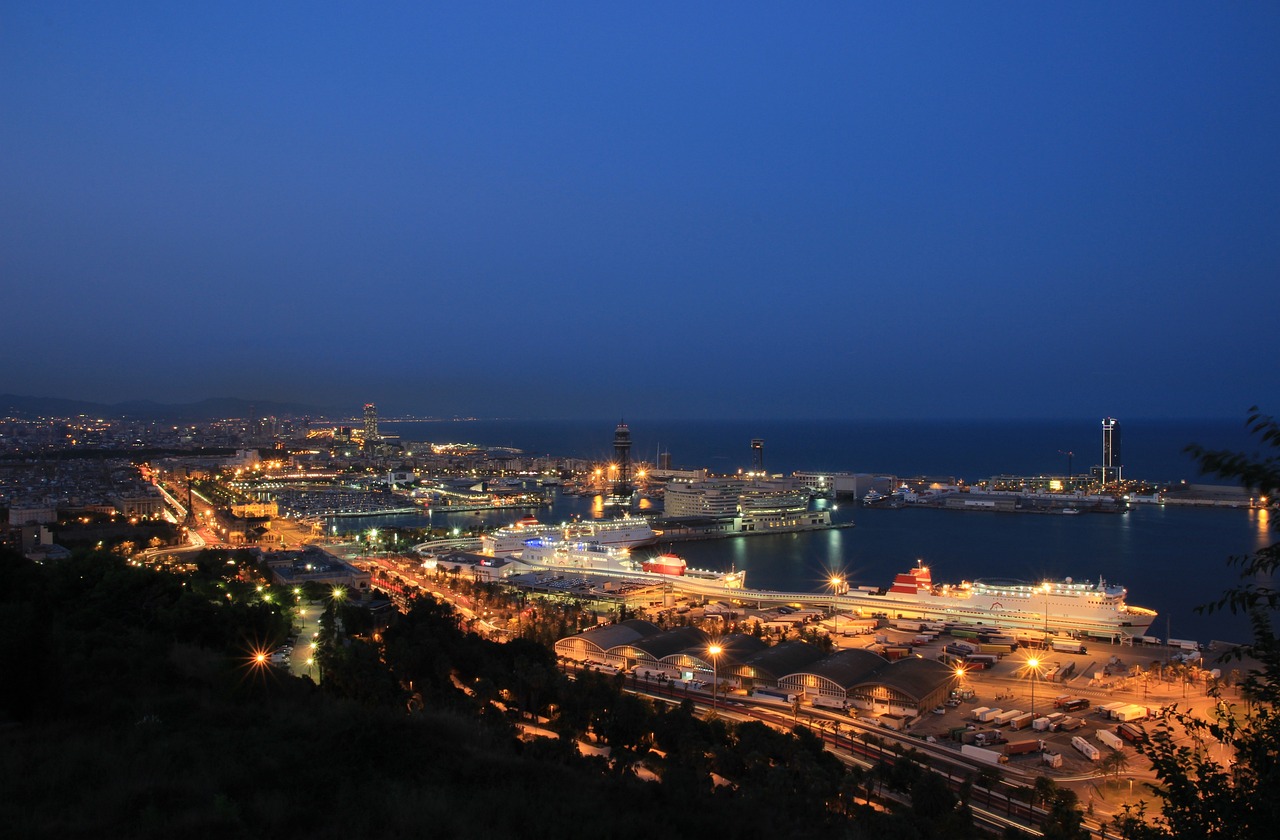Ferries to Catalonia from other areas/regions
824Km Genoa ➜ Barcelona
664Km Ibiza ➜ Barcelona
288Km Menorca (Ciutadella) ➜ Barcelona
213Km Nador ➜ Barcelona
823Km Port of Palma de Mallorca ➜ Barcelona
287Km Porto Torres ➜ Barcelona
555Km Tangier ➜ Barcelona
983Km
Ferries from Catalonia to other areas/regions
824Km Barcelona ➜ Genoa
664Km Barcelona ➜ Ibiza
288Km Barcelona ➜ Menorca (Ciutadella)
213Km Barcelona ➜ Nador
823Km Barcelona ➜ Port of Palma de Mallorca
287Km Barcelona ➜ Porto Torres
555Km Barcelona ➜ Tangier
983Km
Catalonia
Catalonia is an autonomous Spanish community in the north-east of the Iberian Peninsula with a long coastline on the Mediterranean. The four provinces, Barcelona, which is also the capital city, Gerona, Lleida and Tarragona, are in turn divided, in order, into 11, 8, 12 and 10 comarche, minor territorial entities. The climate is dry Mediterranean, but in the Pyrenees, reliefs that extend for more than 200 kilometers in the Catalan territory (almost 50% of the entire mountain range) marking the border with France, the temperatures become very low. The 580 kilometers of coastal strip, the so-called Catalan Coastal Ranges, are largely flat, with coastal depressions, prelittoral and other plains, with a few short stretches of coastal reliefs of a certain height, mostly hilly. In addition to low coasts and mountains, there is the so-called Central Catalan Depression, where the largest river in Spain flows, the Ebro, with the delta in the province of Tarragona through which it flows into the Mediterranean Sea. Starting from the north, the coast of Catalonia is formed by the Costa Brava, that of Barcelona, the Costa Daurada and the Terres de l'Ebre. The so-called Terres de Lleida are located inland.
The first coastal part from the north, the Costa Brava, so called because of the high ridges of the province of Girona, is impervious, however, not infrequently, it slopes down towards the sea with beaches framed by greenery, old fishing harbors sheltered by the hills, ancient villages. The Montseny Natural Park, a protected area in the mountains of the prelittoral area, is a UNESCO Biosphere Reserve. In these parts there are also three museums dedicated to Salvador Dalí: the Castell de Púbol, the Dalí Theater-Museum in Figueres and the Dalí House-Museum in Portlligat.
On the Barcelona seafront there are beaches with all the bathing services, including innovative ones, and a wide choice of water sports, boat rentals and equipment, all within a short distance from the historic center of Ciutat Comtal, which has the main commercial and tourist port. of the nation and one of the most important in Europe. The famous La Rambla boulevard connects Placa de Catalunya, the center of the modern city, to the Old Port. Strolling, you can come across the evidence of the city's millennial past and the architectural and urban works of Catalan modernism, such as the Virreina Palace and the Gran Teatre del Liceu. In the Gothic Quarter there are the Cathedral of the Holy Cross and Sant'Eulalia and the church of Santa Maria del Pi, while in the Born there is the Gothic church of Santa Maria del Mar. Among the isolated city squares we find the works of Antoni Gaudí Palazzo Güell, Casa Milà (La Pedrera), Casa Batlló, Casa Vicens, the Sagrada Familia, the Palau de la Música Catalana.
In the province of Tarragona, there is the so-called Costa Daurada, located between Cunit and Alcanar, characterized by beaches of fine and golden sand, but not only: nearby there are outdoor archaeological finds, art in museums and nature. Like the archaeological site of the port city of Tarragona. Do not miss the important Monastery of Santa Maria di Poblet, in Vimbodí i Poblet, not far from the coast.
South of the Catalan coast, the natural parks of the Ebro Delta and Els Ports, a biosphere reserve, with dunes, beaches, lagoons and rocky bays, not far from the river that flows into the sea water creating a ideal habitat for many species of birds, from orchards and woods.
In the Terres de Lleida, in the hinterland of Catalonia, the naturalistic landscapes are both wild and those shaped by long peasant traditions. There are caves with prehistoric engravings and many monuments of cultural interest, castles, cathedrals. There are many possibilities to travel the area thanks to the many itineraries, including food and wine, and hiking trails. The Catalan Romanesque churches of Vall de Boí are a World Heritage Site in the area. In the Val d’Aran, the only comarca of Catalonia located beyond the Pyrenees, the Garonne river rises in an incredible naturalistic setting.
Catalan gastronomy is based on the typical ingredients of Mediterranean cuisine, such as tomatoes, garlic, aromatic herbs, olive oil. The products of the land and those of the sea are made to marry in the fideuá (a paella with pasta instead of rice), and fish predominates in the seaside resorts, such as in the suquets (stews) and in the esqueixada (cod salad). Escalivada is a roasted vegetable salad and calcots are roasted onions. Much used in the combinations are sofregit, fried onion, celery and carrots, and aioli sauce, a kind of mayonnaise with garlic, oil and lemon. Fuet and llonganisa cured meats and butifarra sausage are traditionally produced with pork. Furthermore, in inland areas, mushroom picking is always abundant in autumn. In Barcelona's Ciutat Vella market, La Boqueria, you can find a bit of everything, in particular lots of fish, molluscs and crustaceans.
The most important wine is Cava, a sparkling wine made mainly with grapes from Penedès, a region of vines also for still wines. The developed Catalan enology also offers quality reds from the historic vineyards of La Rioja. The Priorat, Costers del Segre, Montsant, Terra Alta, Pla de Bages are made from the best white berried grapes.
Latest articles from the blog

10 things to do in Barcelona
Barcelona is a must-visit port city that can amaze those who have never visited and make those who have been there fall in love. Let's find out why by examining its attractions.

How to get to Barcelona by boat
To reach Barcelona, cruise ferries represent a reasonable alternative to flying: the reasons why, the departure ports and other indications are given below.

Sant Jordi in Barcelona, on April 23, a riot of roses and books for the party
The Catalan patron saint is celebrated in Barcelona and throughout the autonomous community with the exchange of roses and books between lovers and all the people who somehow love each other.
